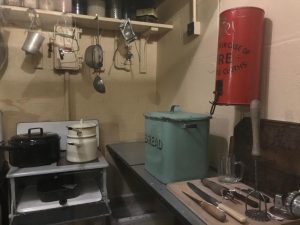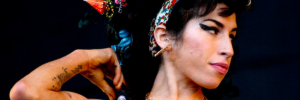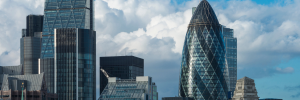The Festival of Britain stands as a historic milestone, providing numerous opportunities for women artists and designers to showcase their talent. One prominent artist, Barbara Hepworth, received two significant public commissions during this momentous event. Additionally, renowned artists Henry Moore and Frank Dobson made notable contributions to the festival through their captivating sculptures. Let’s delve into the details of these remarkable artworks and their current locations.
Barbara Hepworth’s Abstract Creations
Renowned sculptor Barbara Hepworth left an indelible mark on the Festival of Britain with her innovative and striking creations. One of her notable commissions, “Turning Forms,” a motorized abstract sculpture made of reinforced concrete and painted white, stood at an impressive height of 84 inches (just over 2 meters). Originally commissioned by the Festival of Britain authorities, it was later relocated to Marlborough Science Academy in St Albans. In October 2020, the sculpture was moved to a sculpture conservation studio for extensive restoration work, ensuring its preservation for future generations to enjoy.
Another remarkable sculpture by Hepworth, titled “Contrapuntal Forms,” was crafted from Irish blue limestone and stood at a towering height of 120 inches (just over 3 meters). Commissioned by the Arts Council, it adorned the Dome of Discovery on the South Bank during the Festival of Britain. In 1953, the Arts Council presented “Contrapuntal Forms” to the new town of Harlow in Essex, where it is now situated at Glebelands, offering an enduring symbol of artistic excellence.
Henry Moore’s Triumph: ‘Reclining Figure’
A centrepiece of the Festival of Britain, Henry Moore’s monumental sculpture “Reclining Figure” marked a significant milestone in the artist’s career. It was the first large reclining figure Moore created in bronze and is considered one of his most remarkable achievements. Currently residing at the Scottish National Gallery of Modern Art in Edinburgh, this captivating sculpture has captivated countless visitors with its powerful presence and timeless beauty.
The original plaster sculpture, from which the bronze casting was derived, was generously gifted to the Tate Gallery in 1978 after Moore’s passing. Alongside this exceptional piece, Moore bestowed 35 other sculptures to the Tate Gallery, ensuring a lasting legacy for future generations to appreciate and admire.
Frank Dobson’s ‘London Pride’ and Peter Laszlo Peri’s ‘The Sunbathers’
Frank Dobson, commissioned by the Festival Design Group, contributed to the Festival of Britain with his sculpture ‘London Pride’ (1950-51, c1987). This work, representing the theme of leisure, was initially created as full-scale clay models at the Royal College of Art, London. Due to budget constraints, the models were cast in plaster and finished in gun-metal. Originally displayed at one of the entrances to the Royal Festival Hall on London’s South Bank, ‘London Pride’ was stored away until 1986 when, at the request of Dobson’s widow, the Arts Council arranged for the sculptures to be re-cast in bronze, finding a permanent home on Queen’s Walk near the National Theatre.
Adjacent to the Festival of Britain’s South Bank Exhibition site, Peter Laszlo Peri was commissioned to create ‘The Sunbathers.’ Welcoming visitors as they arrived from Waterloo Station, this sculpture adorned the wall at the Station Gate. Lost for many years, ‘The Sunbathers’ was rediscovered in a London hotel, where it had been purchased at an auction in the 1950s, its significance as a rare surviving artwork from the Festival of Britain forgotten. Thanks to the efforts of Historic England, a restoration campaign was launched to bring ‘The Sunbathers’ back to public display
Learn more about the Festival of Britain on our London History Podcast Episode 54: The Festival of Britain.




